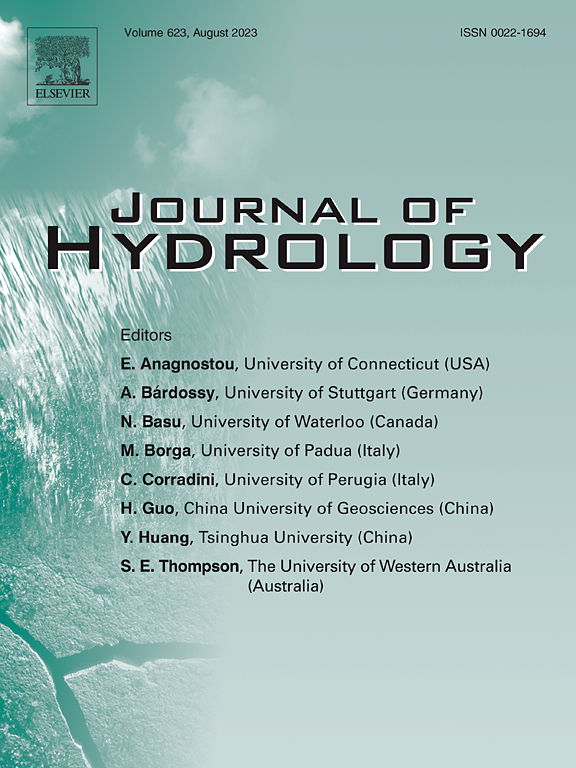Quantitative analysis of water, heat, and salinity dynamics during bare soil evaporation
IF 5.9
1区 地球科学
Q1 ENGINEERING, CIVIL
引用次数: 0
Abstract
In arid and semi-arid regions, significant evaporation intensifies water scarcities and soil salinization, imposing severe challenges to agricultural productivity and economic advancement. This study quantitatively assesses the impact of varying soil salinity levels (0 to 1 wt%) and their distribution within the soil column on water, heat, and salt transport dynamics during evaporation. With a series of eleven experiments, we have studied how different salinity concentrations and distributions across the soil section affect soil moisture, temperature profiles, and salinity distribution. Our findings reveal that moderate salinity levels delay the decline in soil saturation, reduce evaporation rates, and increase soil temperature due to reduced evaporative cooling and salt crust formation. Notably, a strong polynomial correlation was identified between salinity and the duration of the initial stage of saturation before declining. However, at salinity levels above 0.5 wt%, soil temperature starts to decrease as a thick salt layer forms that increases the soil’s albedo and reflecting the sunlight. Additionally, a coupled water-heat-salt transport model was applied to simulate and validate the observed experimental data. Understanding these interactions is crucial for improving the coupled model to optimize water usage, enhance crop growth, and mitigate soil salinization in arid and semi-arid regions.
裸地蒸发过程中水、热、盐动态的定量分析
在干旱和半干旱地区,大量蒸发加剧了水资源短缺和土壤盐碱化,对农业生产力和经济发展构成严重挑战。本研究定量评估了不同土壤盐度水平(0 ~ 1wt %)及其在土壤柱内的分布对蒸发过程中水、热、盐运移动力学的影响。通过11个试验,我们研究了不同盐度浓度和分布对土壤水分、温度和盐度分布的影响。我们的研究结果表明,中等盐度水平延迟了土壤饱和度的下降,降低了蒸发速率,并由于蒸发冷却和盐壳形成的减少而增加了土壤温度。值得注意的是,盐度与饱和度下降前的初始阶段持续时间之间存在很强的多项式相关性。然而,当含盐量超过0.5 wt%时,土壤温度开始下降,因为形成了一层厚厚的盐层,增加了土壤的反照率和反射阳光。利用水-热-盐耦合输运模型对实验数据进行了模拟和验证。了解这些相互作用对于改进耦合模型以优化干旱和半干旱地区的水分利用、促进作物生长和缓解土壤盐渍化至关重要。
本文章由计算机程序翻译,如有差异,请以英文原文为准。
求助全文
约1分钟内获得全文
求助全文
来源期刊

Journal of Hydrology
地学-地球科学综合
CiteScore
11.00
自引率
12.50%
发文量
1309
审稿时长
7.5 months
期刊介绍:
The Journal of Hydrology publishes original research papers and comprehensive reviews in all the subfields of the hydrological sciences including water based management and policy issues that impact on economics and society. These comprise, but are not limited to the physical, chemical, biogeochemical, stochastic and systems aspects of surface and groundwater hydrology, hydrometeorology and hydrogeology. Relevant topics incorporating the insights and methodologies of disciplines such as climatology, water resource systems, hydraulics, agrohydrology, geomorphology, soil science, instrumentation and remote sensing, civil and environmental engineering are included. Social science perspectives on hydrological problems such as resource and ecological economics, environmental sociology, psychology and behavioural science, management and policy analysis are also invited. Multi-and interdisciplinary analyses of hydrological problems are within scope. The science published in the Journal of Hydrology is relevant to catchment scales rather than exclusively to a local scale or site.
 求助内容:
求助内容: 应助结果提醒方式:
应助结果提醒方式:


